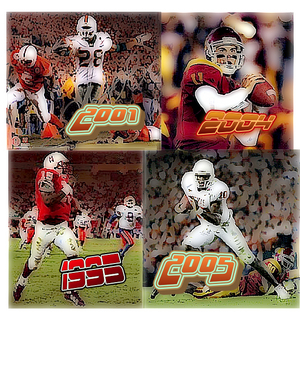In The Strange Case of Dr. Jekyll and Mr. Hyde, Robert Louis Stevenson delves into the peculiar and personal lives of the reputable characters living during the deeply evolutionary and remarkably oppressive Victorian era (a time not unfamiliar to Stevenson himself). Prior to the 1886 release of The Strange Case of Dr. Jekyll and Mr. Hyde, the literary world had seen few psychological thrillers with such potent impact and surprising popularity. Stevenson poetically characterizes a dichotomy of good and evil by means of Dr. Henry Jekyll, a respectable citizen and noted physician. Despite physical evidence supporting the contrary, this novella portrays Dr. Jekyll sheltering contradictory identities within the same flesh, two opposing forces struggling for power of consciousness. Thematically, this elegantly crafted and radically hypocritical anecdote has been marked by the pressing forces of reputation in a formal society, the chemically stimulated reality of man and addiction, and the ever present duality of man that replicates the social divisions of the Victorian era.
Contradictions often occur in the novel due to the pressing need of society to live double lives holding secrets from even their closest friends; however, this kind of mysterious behavior was not uncommon to affluent people of the Victorian era. Despite the progressive attitude of the time, it was still inappropriate to gossip for the sake of keeping one’s distinguished reputation. Because Dr. Henry Jekyll is in essence a scientific phenomenon, he is forced to keep Mr. Hyde, his other primal and wicked self under wraps because of its potential compelling repercussions. When Mr. Hyde tramples a young girl, Mr. Enfield expresses: “We told the man we could and would make such a scandal out of this, as should make his name stink from one end of London to the other” (Stevenson 7). With regards to propriety, the people were able to threaten Mr. Hyde with reputation because there is no defense against a marred name.
This secretive Victorian society was not just for the criminal class; many upstanding citizens were living lives even their closest social circles knew nothing about. Even Mr. Enfield was coming from the “end of the world” at three o’clock in the morning the night he saw Mr. Hyde trample a young child. As Dr. Jekyll continued his masquerade of being a reputable physician by day and a disgraceful villain by night, his body began to give way to his baser instincts. Dr. Jekyll admits, “I was slowly losing hold of my original and better self, and becoming slowly incorporated with my second and worse” (Stevenson 121). While the beginnings of his adventures were liberating and guiltless, self-preservation began to give way to a greater and intoxicating evil: an uncontrollable addiction.
The idea that a chemical addiction can be attributed to the pharmacological creation of Mr. Hyde is often overlooked, but the reality is that this reprehensible creature arrived as a result of Dr. Jekyll’s concoction. What once was a euphoric and enthralling experience quickly spiraled into biological atrophy and chemical dependency. Despite the fact that Dr. Jekyll says, “The moment I choose, I can be rid of Mr. Hyde” (Stevenson 33), it becomes increasingly more evident that Dr. Jekyll is aware of his other half’s destructive capabilities but continues to engage in this potion anyway. Thus, Dr. Jekyll is desperately attempting albeit with substance abuse to divide the two dueling species dwelling within; his inward desire for nobility and his primitive cravings cause him great psychological warfare ending in self-destruction.
Dr. Jekyll’s inevitable demise occurs because of his own selfish desires; the allure of Mr. Hyde was impossibly unavoidable and thus led to his own death. This unique and enigmatic relationship that exists between Dr. Jekyll and Mr. Hyde is not fully revealed or understand until the close of the novel, however, it is this disturbed and symbiotic combination that creates the most thematically complex tale of all: the duality of man. Amidst this intermingling of light and dark and good and evil, Dr. Jekyll becomes exclusively enveloped in his psychologically haunted self. Dr. Henry Jekyll himself asserted that:
“With every day, and from both sides of my intelligence, the moral and the intellectual, I thus drew steadily nearer to the truth, by whose partial discovery I have been doomed to such a dreadful shipwreck: that man is not truly one, but truly two” (Stevenson 106).
Drawing ideals from Sigmund Freud and parallels of existence, Stevenson leads us as readers to inwardly examine our own clashing identities. It is perhaps more notable to not only dwell on Dr. Jekyll’s implicitly physical second half, but instead he admits, “human beings, as we meet them, are commingled out of good and evil” (Stevenson 112).
The thematic elements of The Strange Case of Dr. Jekyll and Mr. Hyde are uniquely delightful and mildly overstated while the tale illustrates the countless layers of mystery and hypocrisy. It is through the central relationship between Dr. Jekyll and Mr. Hyde that we realize the understated desire we have as humans to simultaneously maintain a virtuous lifestyle and satisfy our rudimentary needs. The ease of readability and the casual parallels facilitate the contrasting ambience that allures to the reader. Because Stevenson chose many points of view, we are able to grasp the distinctive writing style and thematic elements that still captivates readers 121 years later.
![Review: "Dr. Jekyll and Mr. Hyde" [1931] Review: "Dr. Jekyll and Mr. Hyde" [1931]](https://karla.news/wp-content/plugins/contextual-related-posts/default.png)



